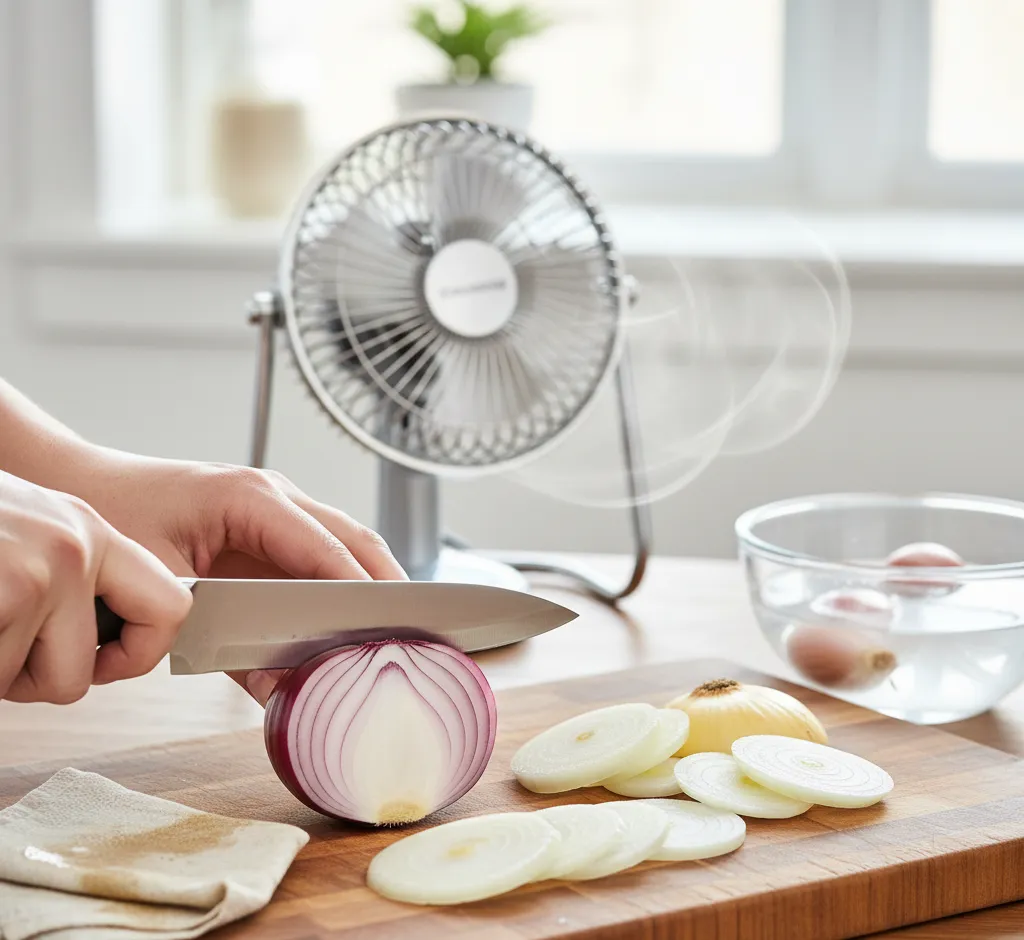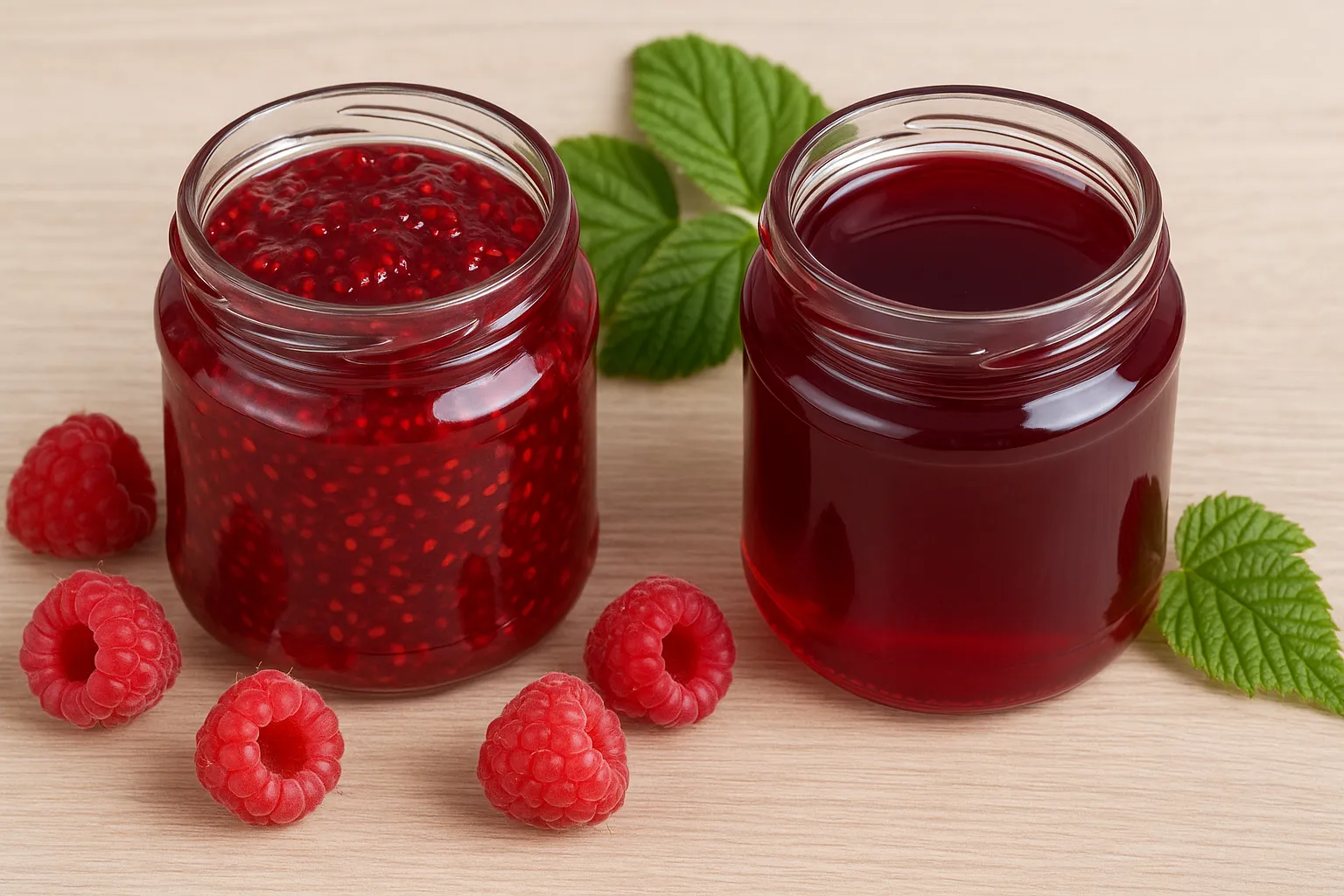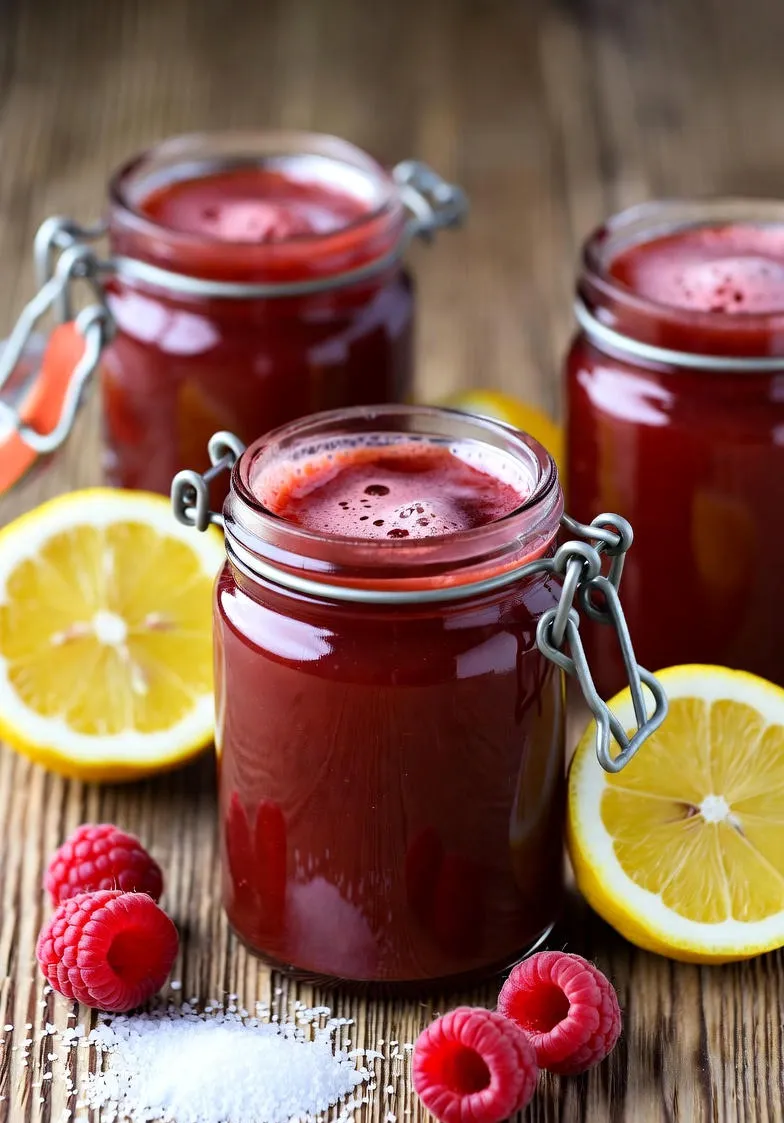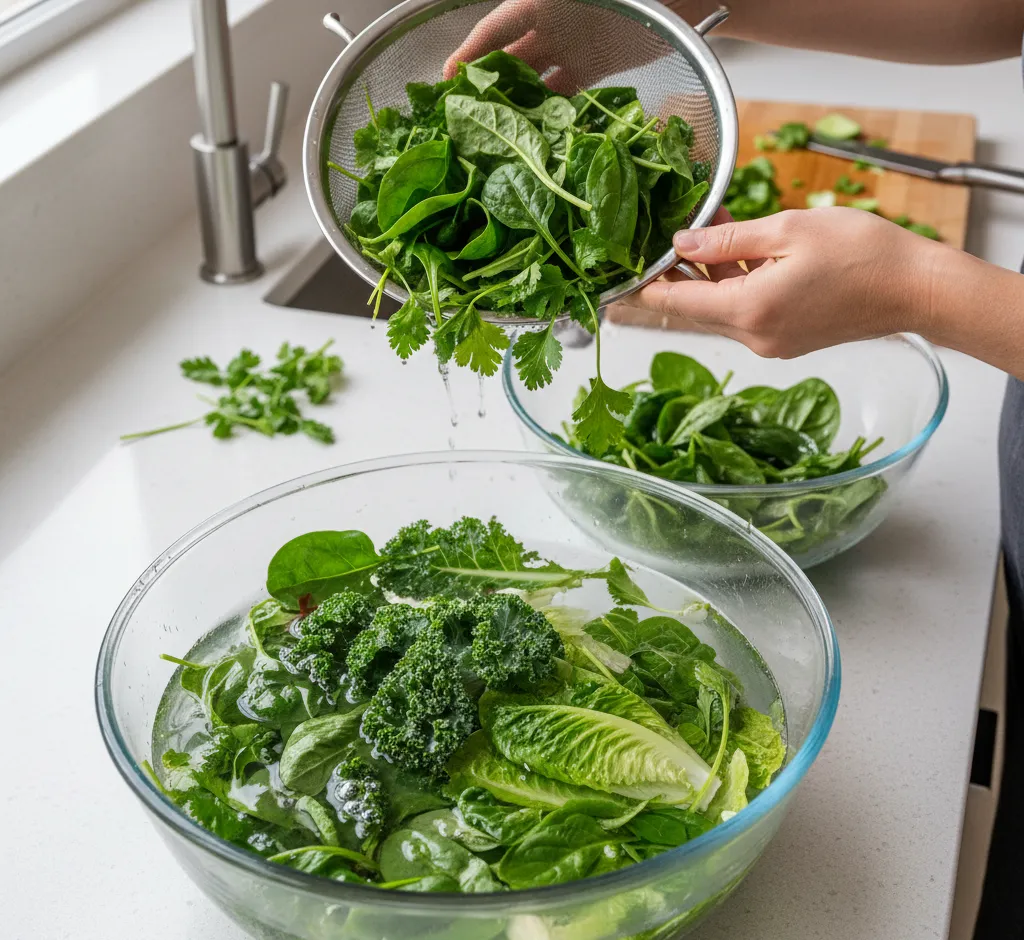The Ultimate Guide: 10 Proven Methods to Cut Onions Without Crying
Stop crying while chopping! Discover the ultimate guide to cutting onions without tears, featuring 10 proven methods, including chilling, sharp knives, and specialized ventilation techniques. Master the science and make onion prep pain-free.

Introduction: Why Onions Make Us Cry
For centuries, the humble onion has been a cornerstone of global cuisine, providing a foundational flavor to countless dishes. Yet, this culinary hero carries a secret weapon: a tear-inducing defense mechanism that has frustrated home cooks and professional chefs alike. The act of chopping an onion often transforms a calm kitchen moment into a watery-eyed ordeal. But it doesn't have to be this way.
This comprehensive guide dives deep into the science behind the tears and, more importantly, provides **10 scientifically sound and kitchen-tested methods** that will allow you to prep, peel, and chop onions with dry eyes and perfect precision. We’ll explore simple temperature tricks, tool usage, strategic breathing, and more, ensuring your next cooking session is completely tear-free.
The Science of Tears: What's Really Happening?
To defeat the onion, you must understand its enemy. The tears are caused by a volatile chemical defense system. When an onion is cut, its cells are broken, releasing a suite of enzymes called alliinases. These alliinases mix with sulfur-containing compounds (called L-cysteine sulfoxides) that are naturally present in the onion. This reaction creates a short-lived chemical called **propanethial S-oxide**.
Propanethial S-oxide is a volatile sulfuric compound that quickly vaporizes and wafts up to your eyes. When it hits the watery surface of your eye (the cornea), it dissolves, forming a mild form of sulfuric acid. Your body's natural defense mechanism kicks in immediately: **tears** are produced to wash away the irritant. Understanding this process is the first step toward effective mitigation.
The 10 Proven Methods to Stop Onion Tears
Here are the most effective strategies, categorized for clarity, to neutralize the tear-inducing compound and keep your eyes dry.
Method 1: The Cold-Temperature Strategy (Slowing the Reaction)
The speed at which the propanethial S-oxide is produced and vaporized is directly related to temperature. Lowering the temperature is one of the most reliable methods.
- Chilling the Onion: Place the whole, unpeeled onion in the refrigerator for **30 minutes** or in the freezer for **10-15 minutes** before cutting. The cold temperature slows down the enzymatic reaction (the alliinase activity), significantly reducing the release of the irritant gas.
- Submerging the Onion: After peeling, quickly submerge the onion in a bowl of **ice-cold water** for a few minutes. This also chills the surface and, critically, the water acts as a sink, absorbing some of the enzymes released during the initial peeling.
Method 2: The Ventilation Strategy (Removing the Gas)
If you can't stop the gas from forming, the next best thing is to ensure it is immediately whisked away from your face.
- Cutting Near a Fan or Range Hood: Position your cutting board directly under an activated **range hood fan** (set to high). The updraft will pull the irritant gas away before it can reach your eyes. A small desktop fan positioned to blow across your cutting board and away from your face works just as well.
- The Window Trick: Cut the onions near an **open window** or in a well-ventilated area. The cross-breeze will dilute the concentration of the irritating gas quickly.
Method 3: The Water Barrier Strategy (Absorbing the Gas)
Since the irritant gas is highly soluble in water, you can use water to intercept the gas before it reaches your eyes.
- The Wet Paper Towel: Place a folded, damp paper towel near your cutting board. The highly absorbent paper towel, soaked with water, will draw the propanethial S-oxide vapors away from your eyes and absorb them. Refresh the towel if cutting a large batch.
- Cutting Under Running Water (Use Caution): For finely minced onions, some cooks will carefully slice them while holding them under a gentle stream of running cold water. **Safety Warning:** This method makes the knife and cutting surface slippery, increasing the risk of injury. Use this only for the final rinse and chop, and prioritize safety.
Method 4: The Physical Barrier Strategy (Protecting the Eyes)
If you block the pathway of the gas, it cannot cause tears. This is the most straightforward, albeit often humorous, solution.
- Onion Goggles: These are specialized, foam-sealed glasses designed specifically for this task. They create an airtight seal around the eyes, physically preventing the volatile vapors from making contact. They are a worthwhile investment for frequent cooks.
- Ski or Swim Goggles: Any form of goggle that seals around the eye sockets will work in a pinch. **Caution:** Ensure the fit is snug; even a small gap allows the vapors to sneak in.
Method 5: The Acidic Neutralization Strategy (Chemistry in the Kitchen)
Some cooks swear by introducing an acidic element to the cutting process, though its scientific mechanism is debated, it is highly effective for many.
- The Vinegar Wipe: Before you start, quickly wipe your cutting board with a small amount of **white vinegar** on a clean cloth. The theory is that the vinegar helps neutralize the enzyme or absorb the vapors on the surface of the cutting board, preventing them from becoming airborne.
Method 6: The Correct Cutting Technique (Minimizing Cell Damage)
The amount of gas released is directly proportional to the amount of cell damage. A dull knife crushes cells; a sharp knife slices them cleanly.
- Use a Razor-Sharp Knife: This is arguably the most crucial method. A **sharply honed knife** minimizes the cellular rupture, which means fewer alliinases are released. A quick, clean cut is a tear-free cut. Always sharpen your knife before an onion-heavy prep session.
- Cut Away from the Root End: The **root end** (the part with the hairy fibers) contains the highest concentration of the sulfur compounds. Cut the onion in half from top to bottom, but leave the root end intact for as long as possible. Use the root end as a 'handle' while you slice and dice the rest of the onion. Only chop the root last, or discard it entirely.
Advanced Techniques and Common Myths
The Bread Trick and Breathing
A popular myth suggests holding a piece of bread in your mouth while cutting onions. The idea is that the bread will absorb the fumes. While the bread itself doesn't offer chemical absorption, the act of chewing or holding the bread often forces you to **breathe through your mouth**. If you breathe through your mouth (gently) and exhale through your nose, you might be reducing the concentration of the gas entering your nasal passages, which are connected to your tear ducts.
Breathing Strategy Re-evaluated
- Slow, Steady Breathing: Try to breathe slowly and deliberately. The quick, shallow breaths of panic actually draw more air (and gas) over your mucous membranes.
- Breathe Out Through Your Nose: Exhaling through the nose helps to create a slightly outward-flowing air current, preventing the external gas from being inhaled or reaching your inner membranes.
Why Lemon and Matches Don't Work
There are many old wives' tales that have been proven ineffective:
- Lighting a Match: The claim is that the sulfur in the match head absorbs the gas. While matches contain sulfur, the tiny amount burned is completely inadequate to neutralize the significant volume of gas released by an onion.
- Licking a Knife: This does nothing but transfer bacteria. The chemical reaction occurs in the air, not on the knife blade in a neutral way.
- Chewing Gum: Similar to the bread trick, this only helps if it encourages you to mouth-breathe, but it doesn't offer a chemical solution.
Conclusion: Embracing a Tear-Free Future
Cutting onions doesn't have to be a painful prerequisite to a great meal. By understanding the simple, volatile chemistry at play, you can select the method that works best for your kitchen setup and cooking style. For most, a combination of a **sharp knife** and the **cold-temperature strategy** (chilling the onion) offers the most reliable and convenient solution.
Embrace these techniques, and you will not only save your eyes but also save valuable time and enjoy the cooking process more fully. A dry-eyed cook is a happy, efficient cook, and a happy cook makes delicious food. Now, go forth and conquer the onion!


